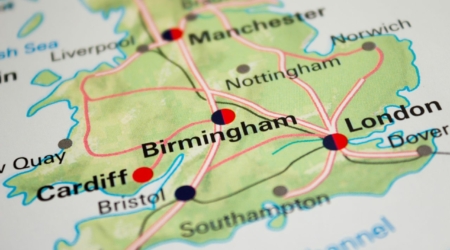Many of us go about our daily routine without once thinking of the word engineer. We pass buildings and tunnels and structures with simply a momentary acknowledgement of their existence. If we do stop to “smell the concrete roses”, we still might not know that the brains behind such feats are engineers.
Working with a combination of mathematical and natural sciences, engineers consistently solve problems that most of us didn’t even know existed. Creatively finding solutions for the designs of public necessities such as sewers, dams, traffic control, mass transit, buildings and more, civil engineers quietly contribute to the world’s infrastructure on an enormous scale. Society as we know it would not exist without the many contributions of engineers.
But what about when those necessary services are taken care of? With the city and its inhabitants safely provided for, is the work of an engineer complete? Not at all. Around the world, there are feats of engineering that push the boundaries of what we previously thought possible. Engineers are not content to sit back admiring what we now hold to be the basics – instead, they extend the limits of structure as we know it. From the minute to the massive, the world of engineering is rapidly changing, but what does not change is its ability to astound.
Here are some examples of feats of engineering around the world that did just that.
The Kansai Airport, Japan
Born from a need for a new airport in the Osaka area, The Kansai Airport in Japan was the first ever airport to be built on an entirely artificial island. Engineers here needed to solve multiple problems, including the lack of space within busy Osaka, and the noise restrictions that would be difficult to adhere to if an airport were built in such an already built-up area.
It was decided that the airport would be constructed on its very own bespoke, man-made island. There were multiple challenges to overcome even before the airport itself could be built. Sinkage of the island was a huge factor, as was the need for a link between the island and the land that could safely ferry across the millions of passengers expected to use the airport each year.
Completed in 1994, the island measures 4 kilometres by 2.5 kilometres, and the airport itself took three years to build, with the help of more than 10,000 workers. Read more about the project here: https://en.m.wikipedia.org/wiki/Kansai_International_Airport
The Palm Islands, Dubai
Speaking of artificial islands, you may have already heard of the impressive man-made structure that is the beautiful cluster of islands in Dubai. Provided as a wonderful alternative to luxury accommodation – of which there is already plenty in Dubai – the Palm islands are a manufacturing marvel.
Self-titled the “8th Wonder of the World”, the foundations of The Palm were created using 7 million tons of rock from nearby mountains. Interestingly, the amount of material used could form a 2 metre-wide wall that circled the globe 3 times!
Using satellites to plot the shape of the Island (a palm tree, if you hadn’t guessed already), engineers are to be praised for their ingenuity creating a paradise in the middle of the ocean. Read more here: https://www.travelzoo.com/uk/blog/7-mind-blowing-facts-about-how-dubais-palm-jumeirah-was-built/
The Millau Viaduct, France
The so-called “tallest bridge in the world” was designed to solve a traffic problem, linking Paris and Spain and helping ease the congestion between the two. The viaduct itself is 342 metres at its highest point, making it taller than the Eiffel Tower.
It is classed as a cable-stayed bridge, and was designed in part by award-winning engineer Michel Virlogeux. It has four lanes, and 7 piers of different heights. When travelling on the bridge, you might soon notice that it is so high it often stands above the clouds. So beautiful is the view, in fact, that the speed limit had to be reduced due to drivers slowing down to take pictures. And we definitely cannot blame them.
It only has a lifespan of 120 years, but no doubt engineers 120 years from now will be finding solutions to that problem too. Find out more here: https://learnodo-newtonic.com/millau-viaduct-facts
There are, no doubt, many more feats of engineering around the world. As our technology advances, so does our ambition and daring. The scope with which we can travel and innovate constantly expands, and with that comes the need for incredibly intelligent engineers to transform our sketches, dreams and imaginings into reality.
Next time you walk through your city, stop for a moment and think about the amount of manpower that has gone into creating everything around you, and how, as long as engineers continue to expand their fields of view, ours will continue to widen too.









